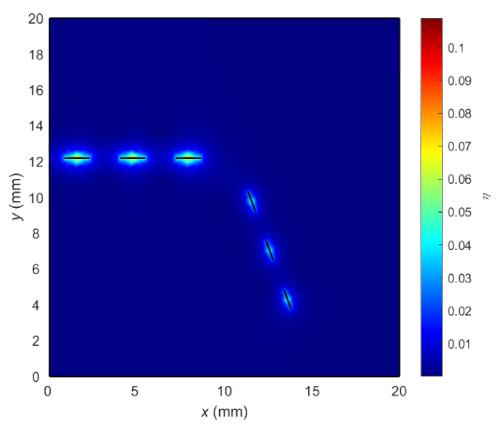AP3-4
A Hybrid REBaCuO-Cu Coating for the FCC Beam Screen: Field Homogeneity and Surface Impedance Studies
*Guilherme T. Telles1, Artur Romanov1, Neil Lamas1, Patrick Krkotic2, Joan O'Callaghan2, Montse Pont2, Sergio Calatroni3, Teresa Puig1, Xavier Granados1, Joffre Gutierrez1
- Institute of Materials Science of Barcelona (ICMAB - CSIC), Spain1
- ALBA Synchrotron Light Source, Spain2
- CERN Technology Department, Switzerland3
Reaching 16T magnetic field and with a 100km acceleration ring, CERN’s future circular collider (FCC-hh) is the most ambitious scenario for a post LHC machine. During operation, the accelerated proton bunches will be stirred by superconducting magnets, producing center-of-mass collision energies of 100TeV. In order to protect the superconducting magnets from the 35.4W/m/beam synchrotron radiation emitted by the protons, the beam-screen, a stainless steel tube, surrounds the particle trajectory, absorbing the radiation, at a temperature window of 40-60K. Due to the proximity of the charged particles, image currents will be induced into the steel walls of the beam-screen, which endangers beam stability. To avoid this, our consortium explores the possibility to coat the interior of the beam-screen chamber with a highly conductive hybrid coating made of Cu and REBaCuO (RE = rare earth) Coated Conductors (CCs).
To keep the charged particles in stable trajectories, the magnetic field quality is of extreme importance inside circular accelerators; To ensure this, CERN imposes that field error must be within a few units over 10000 for the operation of the FCC-hh. In this contribution, we analyse the magnetic field disturbance and its geometric harmonics inside the beam-screen chamber due to the REBCO. This work will explore by means of finite elements numerical analysis a broad range of possible coating geometries that comply with the field quality criterion. In particular, we focus on the moment of the proton injection which corresponds to the most demanding of the operational scenarios. We have prepared samples of the hybrid REBaCuO / Cu coating based on geometries predicted by our model that show lower than Cu surface resistance at close conditions to those found in the FCC-hh. The experiments confirm that this method can successfully generate a coating that complies with the requirements of the FCC-hh, with high field quality and low surface resistance, and that the numerical analysis can be used as a prediction tool for future proposed geometries.
Keywords: Field Quality, HTS, Surface Impedance, REBCO
